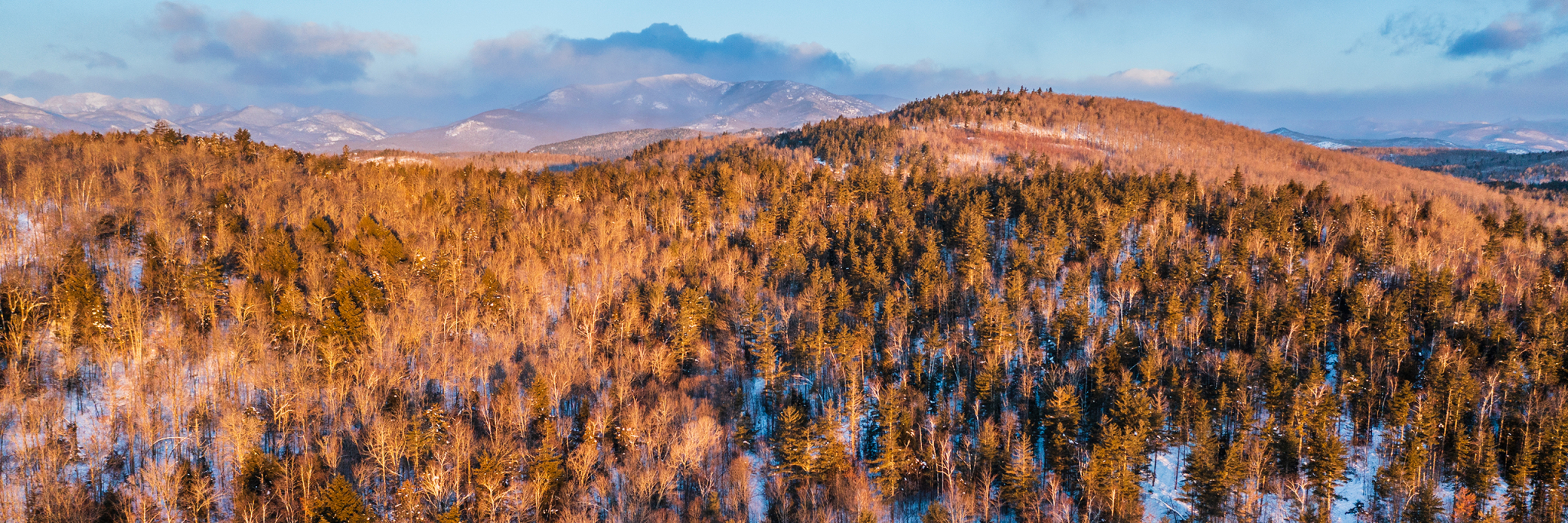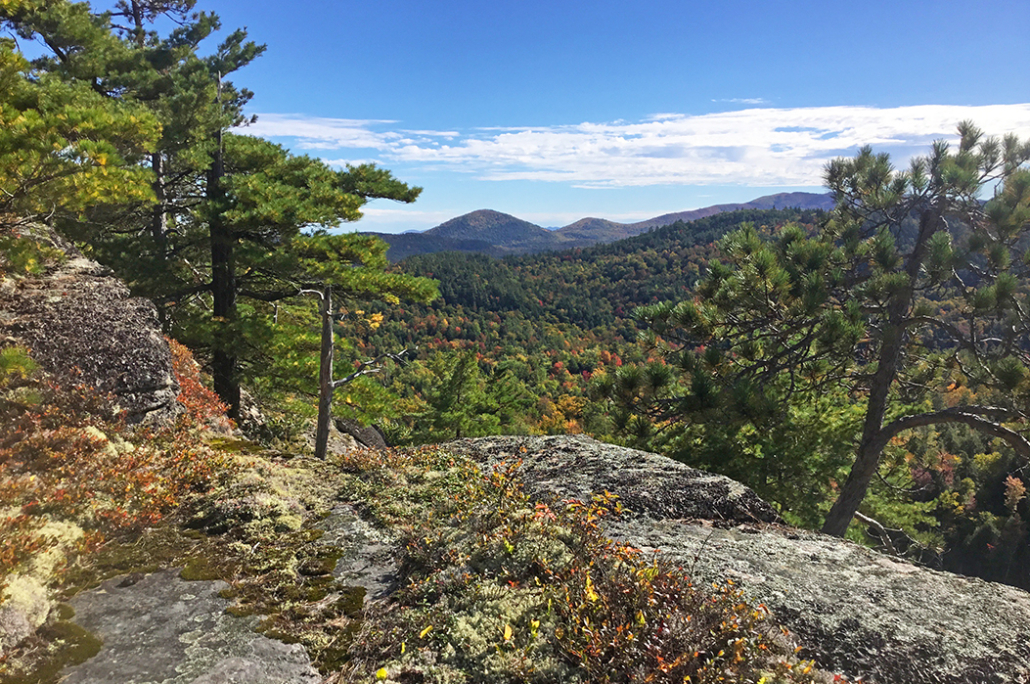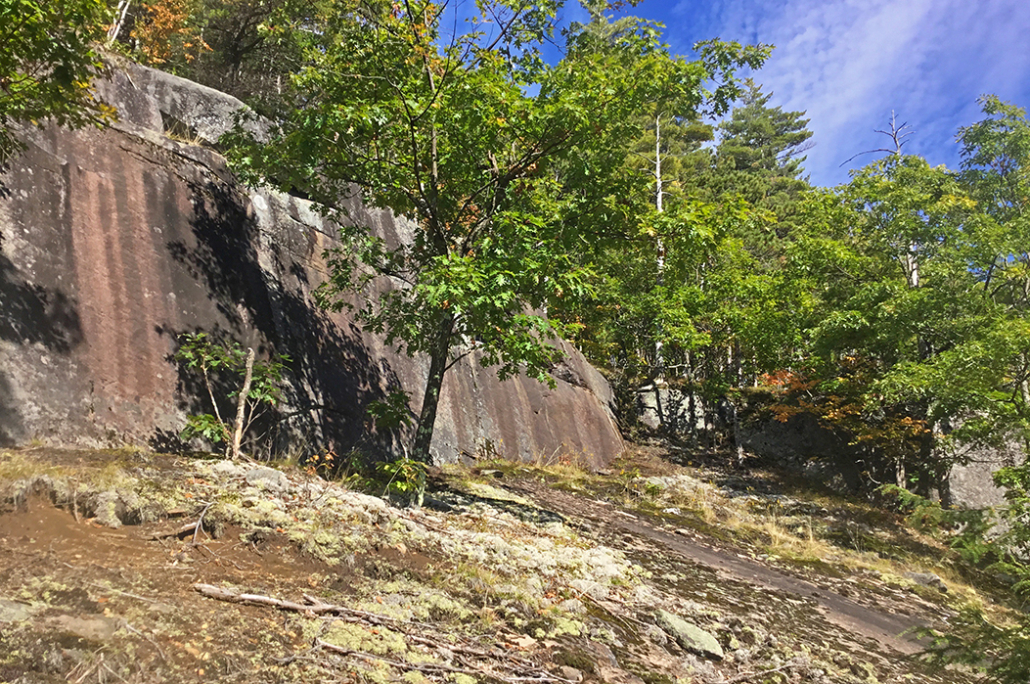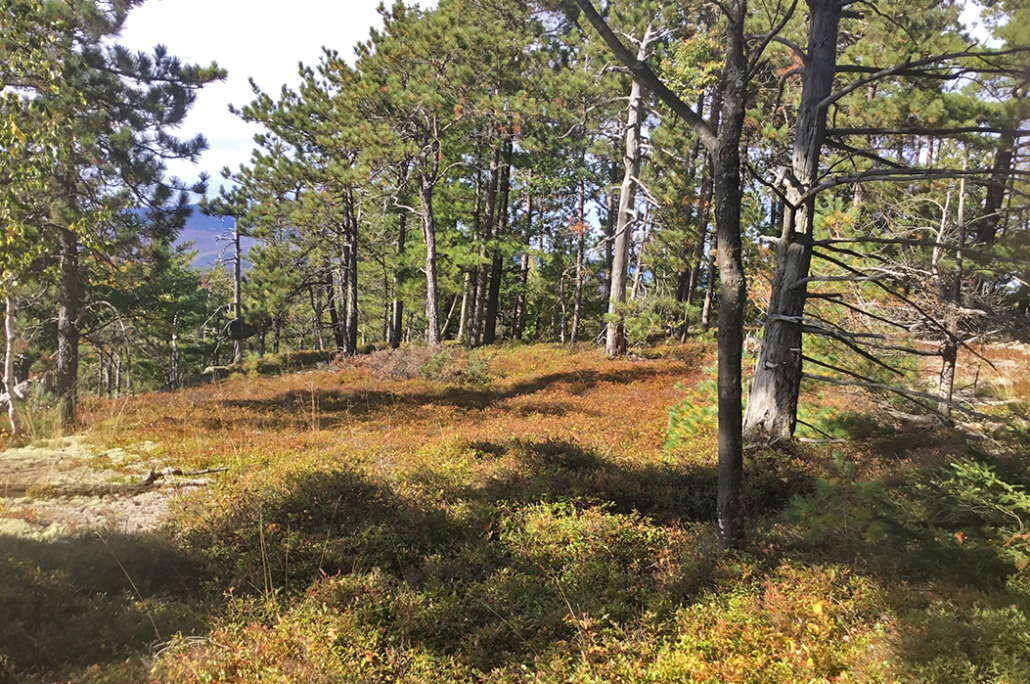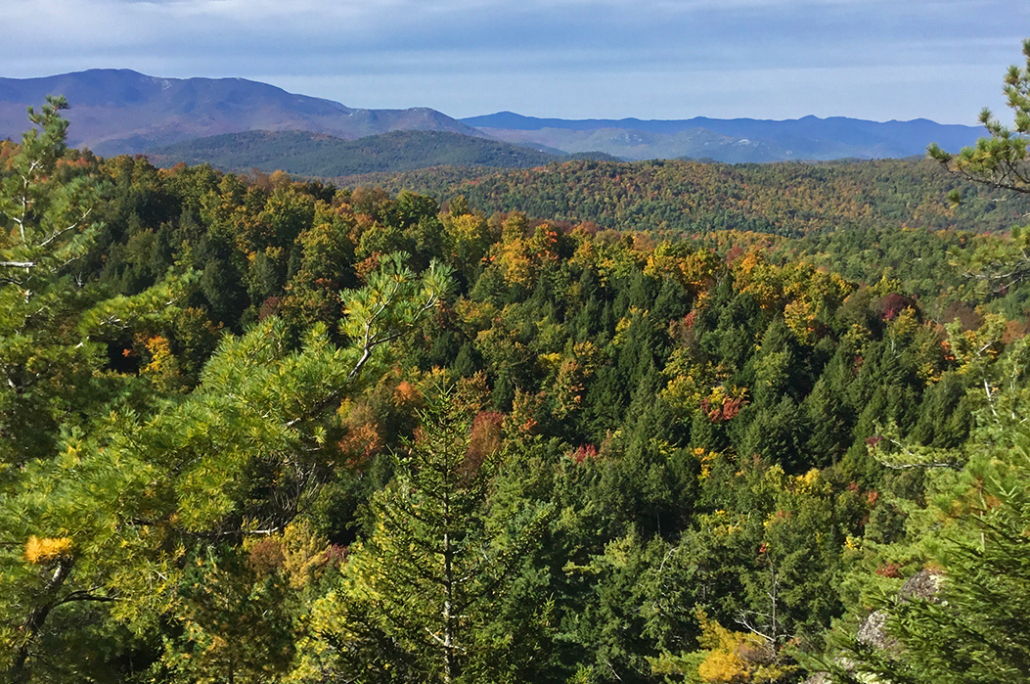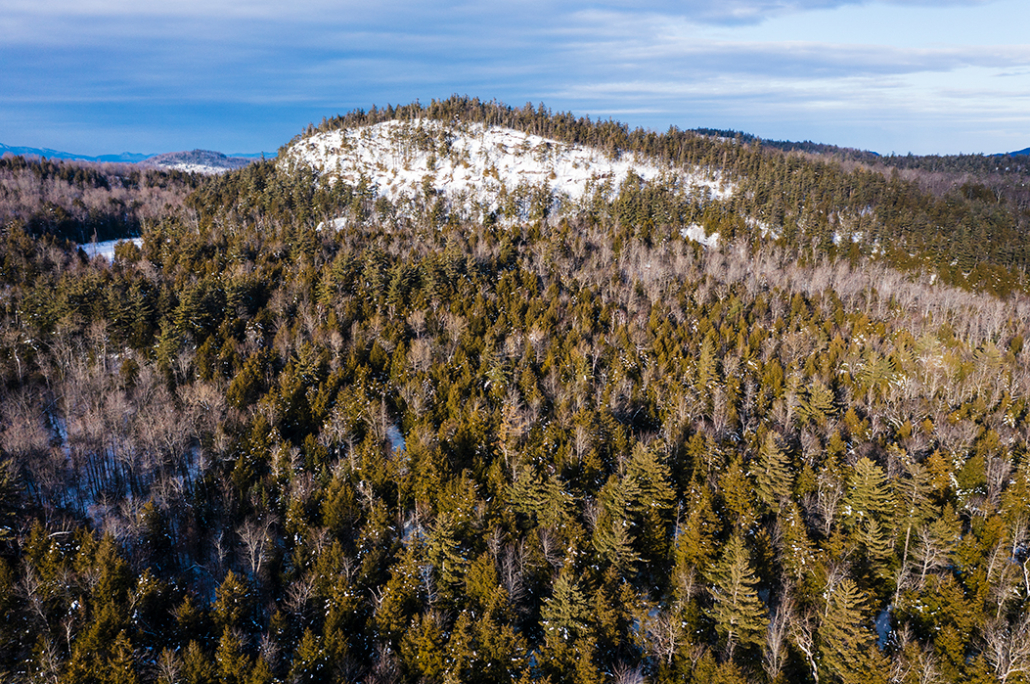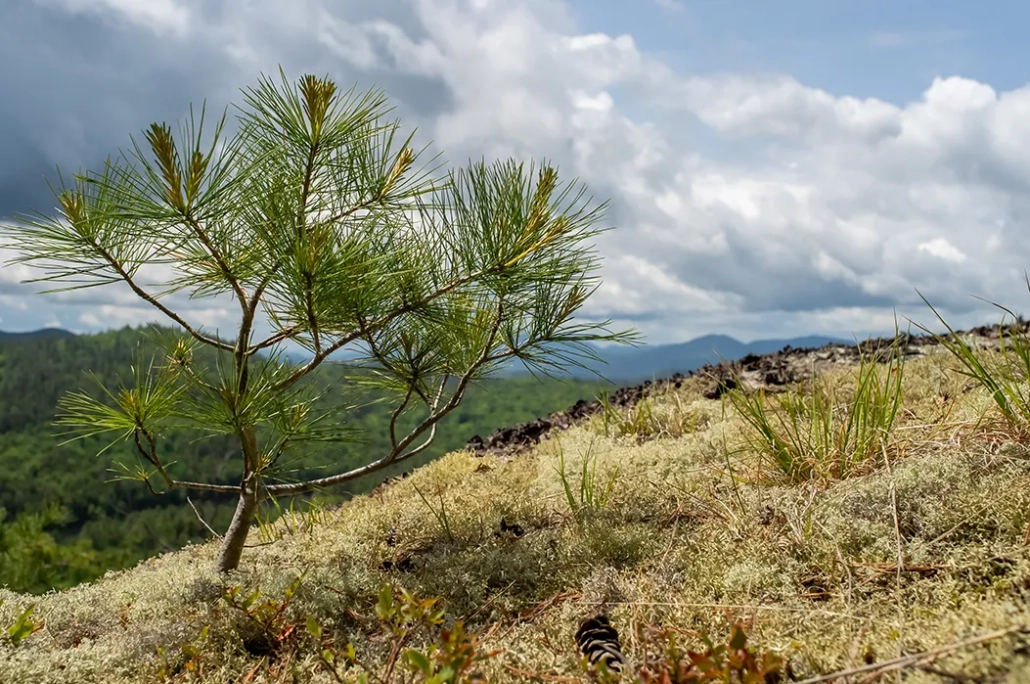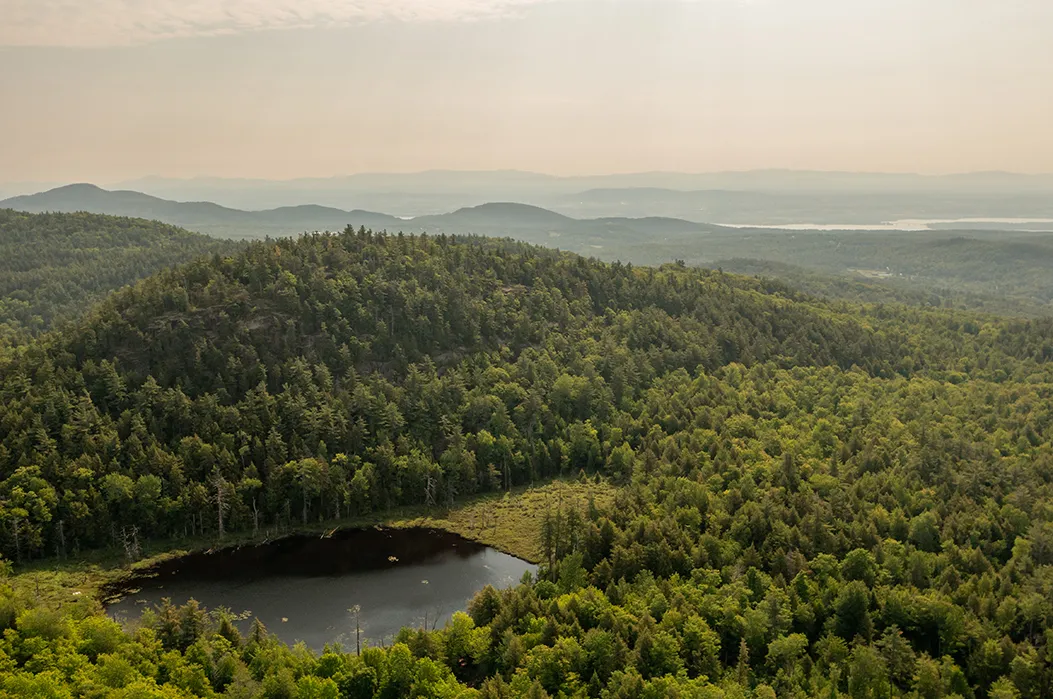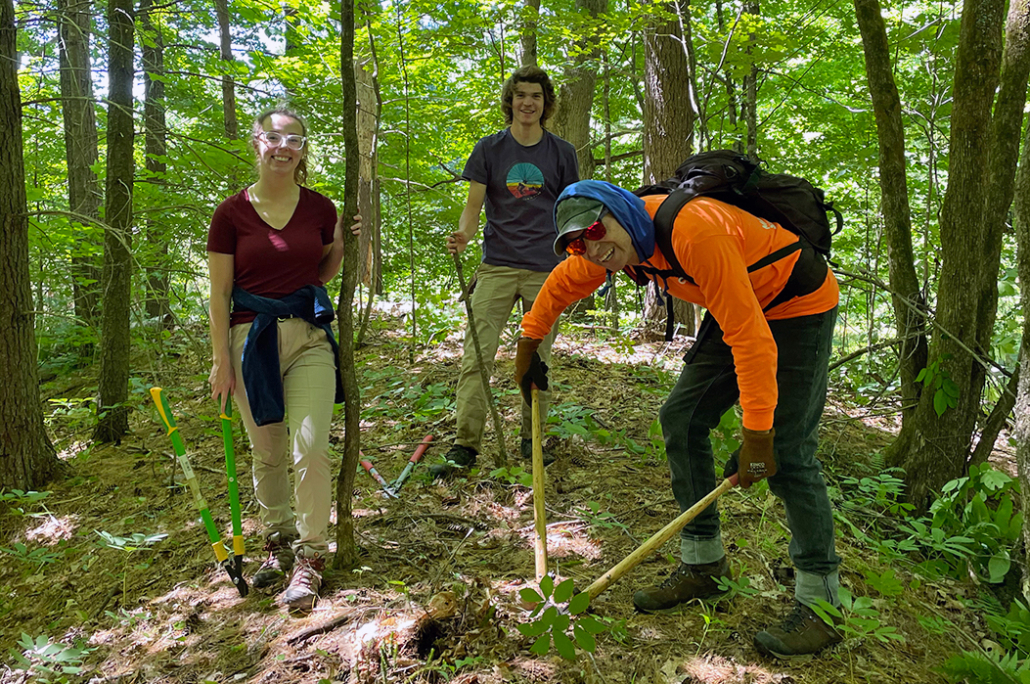Northeast Wilderness Trust celebrated the creation of Moriah Wilderness Preserve in June 2023
Setting the stage for ecological transitions
These 1,775 acres in New York’s Champlain Valley support wildlife movement between Lake Champlain and the Adirondack Mountains. This land sits directly on the transition between two geologic stories: the ancient rocks of the Adirondack Dome to the west, and the glacial sediments deposited by Glacial Lake Vermont in the Champlain Valley to the east. Often referred to as the West Champlain Hills, this region is well-documented to be the most biologically diverse part of the Adirondack Park.
The subterranean transition, combined with varied topography that ranges from the shoreline of Crowfoot Pond to the summit of Moriah’s Armstrong Mountain, results in an ecologically resilient landscape that will support diverse flora, fauna, and fungi responding to climate change.
What’s more, the Moriah Wilderness Preserve geographically ties together Hammond Pond Wild Forest and the Eddy Foundation’s Parch Pond conservation lands with privately conserved timberlands.

